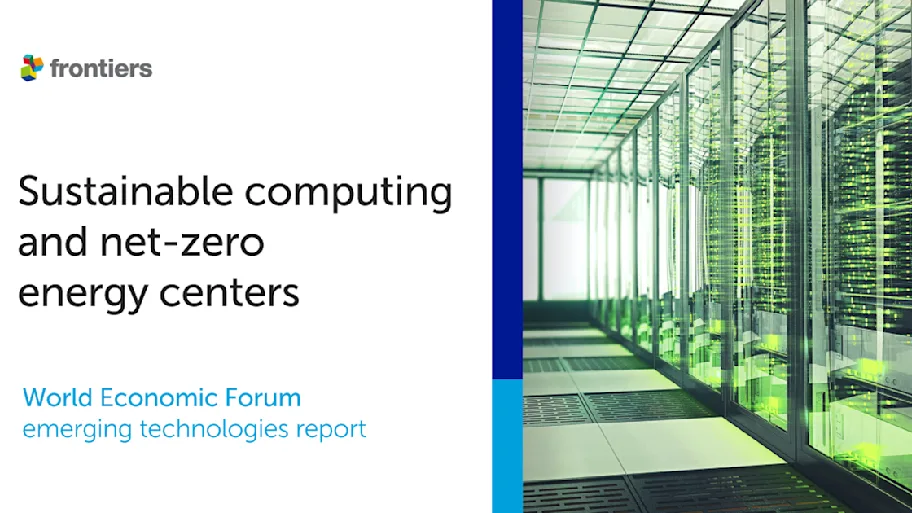
- Science News
- Frontiers news
- Ivana Dusparic – Optimizing resource use to make safe and sustainable cities
Ivana Dusparic – Optimizing resource use to make safe and sustainable cities
Author: Emma Phipps
Dr Ivana Dusparic is an associate professor at the School of Computer Science and Statistics at Trinity College Dublin, Ireland, where her research predominantly focuses on the AI-based optimization of resources in large-scale urban infrastructures. In honor of the United Nations Sustainable Development Goal 11, I spoke to Ivana about how her research contributes to making cities and human settlements safe and sustainable.

Could you start by giving us an overview of your main areas of research?
“I’m a computer scientist. I studied applied mathematics and computer science at the undergraduate level and my master’s and PhD were both in computer science. Although the fundamental work I do is very computer science-oriented, I believe it can be a lot more useful when applied to real-life situations. That’s where the application to sustainability through management of large-scale infrastructures in cities came about.
“My main research area is a branch of artificial intelligence (AI) called ‘reinforcement learning,’ which stems from psychology and neuroscience. It works in the same way as how humans and animals learn: we do something; we don’t know if it’s good or bad; and then we observe the outcome in the environment, which takes the form of either positive or negative feedback. Based on that external feedback, we learn over time what to do and what not to do. This is similar to how children learn not to touch hot objects, for example, and we can do the same with computers. We specify high-level goals that we want a piece of program to achieve, and let the computer figure out how to do that by itself by observing outcomes. When the outcome that we want is achieved, this is positive feedback, everything else is negative feedback.
“An example of where I apply this is in traffic management, both through traffic light management and coordination of vehicles in car-sharing scenarios. The traffic lights and cars learn what to do by observing what happens to traffic based on their actions. Another example is smart grids, where electric devices learn to reschedule to function during off-peak times or times of high accessibility or availability of renewable energy.
“A large amount of my work focuses on the mobility and optimization of traffic. Right away, many people assume that all the research is going into cars and that cars are the way forward. However, cars are the last mode of transport one should resort to, especially in dense urban areas. People should walk, cycle, or take public transportation, if possible. That said, we do need systems that optimize cars to significantly reduce the amount of traffic that remains. To put it simply, the best option is to avoid using engines, but if we have to, then let’s use engines powering those transport modes that can accommodate the largest number of people such as through shared modes and public transportation.”
How has your research focus changed over the years?
“My PhD was in the application of algorithms within urban traffic control and I went back and forth between developments in application areas and developments in the underlying algorithms. We branched out to different types of mobility, such as car sharing, but also realized that the same issues appear in smart grids, the coordination of electrical vehicle charging, and so on. A couple of years later, we moved onto communication networks and figured out that the same issues come up there, for example in sensing in internet of things networks, and, most recently, in the use of drones and unmanned aerial vehicles (UAVs).
“Another change that came about through this work is that although these algorithms are developed using AI and computer science, in order to develop the true applications of them we realized we needed to work more and more with people from different disciplines. For example, in the early days of autonomous vehicles and car sharing, you were hearing that a single shared autonomous car would directly replace 11 private vehicles because they can technically serve 11 different people and/or families and their mobility needs throughout the day. Then, when you do large scale surveys and actually talk to people to understand human acceptance and attitudes towards autonomous vehicles, that figure significantly reduces. It shows that we can’t be developing algorithms in isolation, deluding ourselves that reality will work exactly as shared autonomous vehicles simulations, because it depends on technology acceptance.”
Do you think autonomous cars will become widely adopted?
“That’s a tough one and I go back and forth between being confident that they will, and then seeing where we are currently and a lot of issues coming up with autonomous vehicles. Yes, they will at some stage, but I think it will be a long time before they are autonomous in dense urban environments and going through narrow streets of old towns. They’re going to be safe and useful on highways and in straight lines of travel where things are more predictable, but it will be a while before they fully replace current models.
“The transition period where current models and autonomous vehicles are mixing will be the tricky part, both in terms of technically achieving that mix but also acceptance. We did a study with Transport Infrastructure Ireland and the Road Safety Authority on the impact of that mixed traffic transition period on road traffic and safety, and the results aligned with other international studies showing that things will get worse before they get better. At penetration rates of about 10-20% of autonomous vehicles, it is that interaction between humans and machines driving that things will get worse because of different driving behaviors. It is only at around 20-30% penetration of autonomous vehicles that we begin to see a drastic reduction in congestion and an increase in safety. That period of transition is risky because people will see it getting worse and want to backtrack, but it’s crucial to get through that period.”
How would you say your research aligns with Sustainable Development Goal 11?
“The major way that my research contributes to SDG 11 is through safe mobility. There are a few aspects of mobility where the algorithms I develop can be applied, such as the scheduling of public transport and integrated transport in a mobility as a service (MaaS) mode. This is where you would sign up for a certain amount of minutes’ worth of travel and have a monthly ticket for various transport modes, similar to having a phone contract.
“Another aspect is optimizing resource use. Many of our mobility and energy systems are currently built for the worst-case scenario because they have to support high traffic and energy demands. At other times, there’s a lot of waste in terms of unused road space and energy, for example, because no one’s using them at that particular time of day. Instead of building more to accommodate peak usage, we can cap that and say ‘no, we’re not building another road, this is going to be a park or a bike lane.’ Similarly with energy, we do not need to build another coal power plant, let’s work on shifting the usage of the devices that we can to the times that it’s windy, sunny, etc., so that we can balance out that usage better. It’s about optimizing resource use to minimize waste.”
Have you faced any particular challenges as a woman in your field?
“Probably less than a lot of people that I’ve heard from, but I’ve experienced my fair share. The percentage of women in the field is an issue in computer science and especially in AI; the computer science figures are maybe 20-25% female, in AI that’s down to 10-15%. It really can start as early as preschool. At one point in my son’s preschool, they gave the students a gift at the end of the year - the boys got a helicopter with a full operating mechanism, while the girls got pink beauty sets. By imposing these stereotypes at such a young age, it can be hard to break later on.
“Additionally, a lot of academic work is going to conferences, presenting your work, traveling, and networking. This becomes very tricky when you have young children. There’s a period during which you absolutely can’t travel, so you miss out on events and networking. Things are improving though. Now, a lot of universities in Ireland and the UK are applying for and receiving Athena Swan Charter accreditations, which focus on gender equality within higher education and research. This can include things like specifying core meeting hours to avoid early mornings and late afternoons to facilitate childcare picks up and drop offs.”
You mentioned having your children; what was that like work-wise?
“I have two children, so I’ve been through maternity leave twice, once as a postdoc and then as an assistant professor. I worked through both my maternity leaves, not officially, but I was checking emails, reviewing for conferences, and things like that. On the one hand, that was my own choice, but on the other hand, there was pressure from the system because otherwise you’d miss out and be further behind.
“Universities and funding agencies seem to be increasingly aware of that, and things have changed a lot even between my two maternity leaves. Some conferences now have childcare so you can bring your child to the conference. As of this year, our national funding agency has made childcare costs an eligible part of travel funding. So whether you need to bring your child along or have extra childcare at home while you attend a conference, that can be included. Academia does seem to be better than some of the other workplaces in recognizing that children need parents.”
What would you consider to be your proudest professional achievement?
“I’m really proud of having PhD students graduate. It’s one thing doing your own research, but helping a new generation of researchers accomplish their own pieces of research and become independent researchers themselves, it’s like having an academic child. I get great joy out of that and hope that I still will in 20 years.”
Do you have any advice for early-career female scientists?
“A lot of the things that people do or don’t do are not necessarily them trying to be unhelpful, it’s just because they didn’t think of it. For example, someone scheduling a meeting at 8:30 in the morning, they’re not doing it on purpose to ignore your needs, they might just not have realized that you have a child to drop off. The more we talk about it, the more people will be aware and it will change. So don’t be scared to say, ‘I can’t do 8:30, but I can talk to you at 9:15 because that’s after drop off,’ You’ll be happier knowing your needs are accommodated and people will become more aware of it.”

Frontiers is a signatory of the United Nations Publishers COMPACT. This interview has been published in support of United Nations Sustainable Goal 5: Achieve gender equality and empower all women and girls and United Nations Sustainable Goal 11: Make cities and human settlements inclusive, safe, resilient and sustainable.






